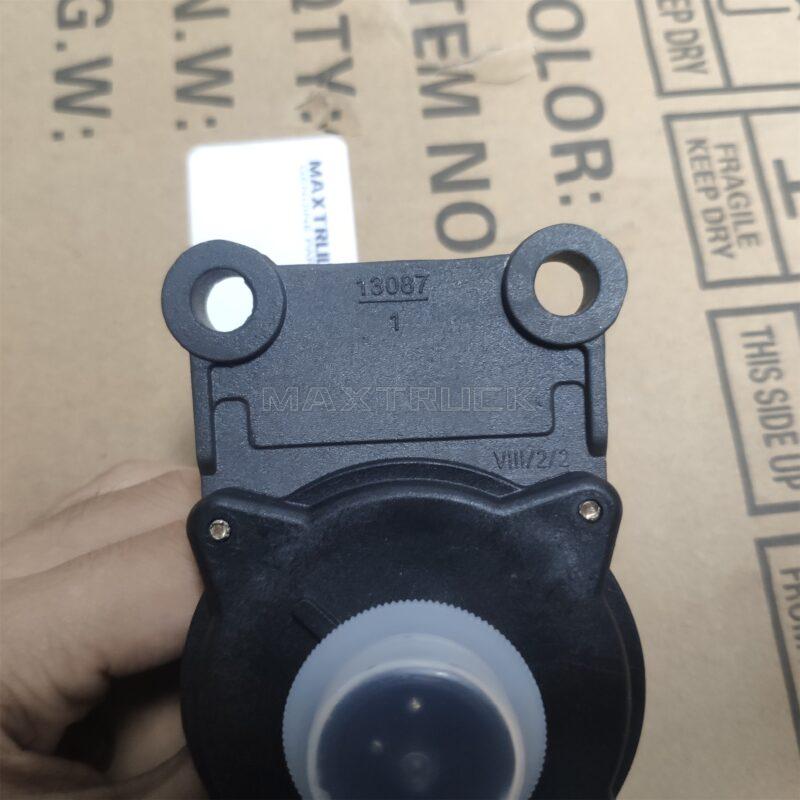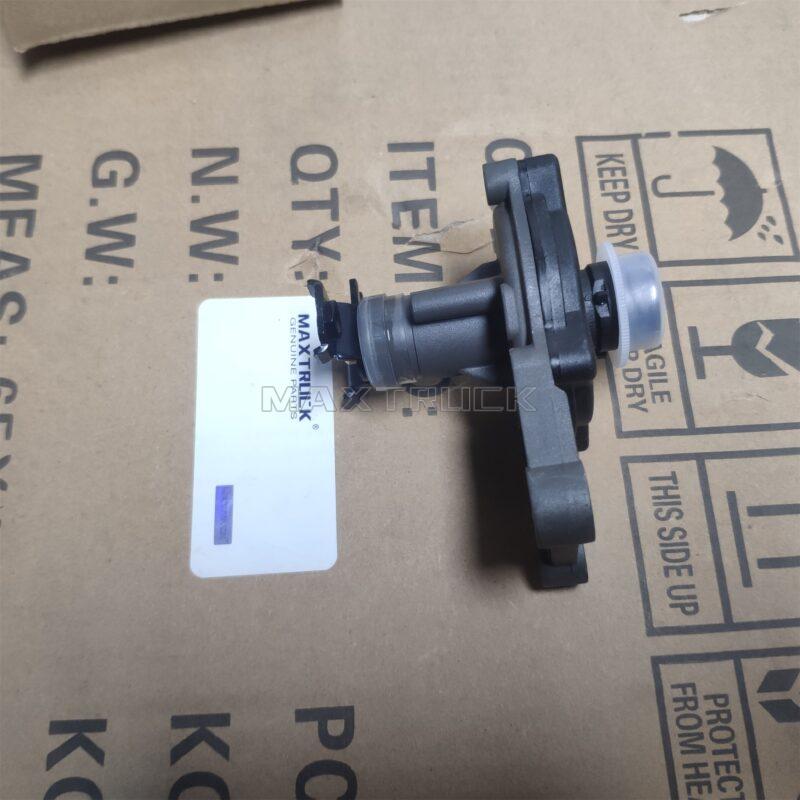Introduction
In today’s fast-paced logistics industry, fleet managers are under constant pressure to ensure that their trucks run smoothly, efficiently, and safely. As fleets grow and become more complex, managing vehicle health, driver performance, fuel efficiency, and safety can become increasingly challenging. This is where truck sensors play a pivotal role in optimizing fleet operations and maximizing productivity.
Sensors embedded in trucks provide real-time data on a wide array of parameters—from tire pressure to engine performance and even driver behavior. These data points are vital for fleet managers who need to monitor vehicle health, prevent costly breakdowns, improve safety, and reduce operational costs. At MAXTRUCK, we recognize the transformative power of truck sensors, and in this article, we’ll explore how these technologies are revolutionizing fleet management and the future of the trucking industry.
How Truck Sensors Enhance Fleet Management
Truck sensors are integral to modern fleet management systems. They provide actionable insights into vehicle performance and driver behavior, which can directly impact the safety, efficiency, and profitability of a fleet. Here are the key areas where truck sensors make a difference:
1. Predictive Maintenance and Downtime Reduction
One of the most significant benefits of truck sensors is their ability to enable predictive maintenance. Traditional maintenance schedules are based on fixed intervals, but sensor technology allows for more precise, data-driven decisions about when and what needs servicing.
- How it Works:
Sensors continuously monitor key truck components such as the engine, transmission, brakes, and tires. Data from these sensors is sent to a central system where machine learning algorithms can analyze the information and predict when a component is likely to fail. This allows fleet managers to perform maintenance only when necessary—reducing unnecessary service and minimizing the risk of unexpected breakdowns.
- Key Benefits:
- Reduced Downtime:
By identifying potential issues before they escalate into major failures, fleets can avoid costly unplanned repairs and ensure vehicles are on the road longer. - Extended Vehicle Lifespan:
Timely repairs and maintenance ensure that trucks are kept in optimal condition, extending the life of the vehicle and maximizing return on investment.
- Reduced Downtime:
2. Real-Time Vehicle Health Monitoring
Truck sensors continuously monitor the health of vehicles, giving fleet managers and drivers up-to-the-minute insights into the status of their trucks. This data is crucial for identifying issues early and responding to them before they lead to more significant problems.
- How it Works:
Sensors installed in the engine, transmission, exhaust system, and other critical areas provide continuous feedback about factors such as temperature, pressure, oil quality, and fuel consumption. This information can be accessed remotely by fleet managers, who can assess the performance of the entire fleet in real-time.
- Key Benefits:
- Instant Alerts:
Fleet managers receive alerts for any abnormal readings, allowing them to address potential issues proactively. - Improved Efficiency:
Real-time data helps optimize fuel consumption, engine performance, and overall vehicle efficiency, ultimately saving costs on fuel and repairs.
- Instant Alerts:
3. Driver Behavior Monitoring
While maintaining the vehicle is important, understanding and improving driver behavior is just as crucial. Driver actions—such as speeding, harsh braking, or accelerating too quickly—can significantly impact fuel efficiency and increase the likelihood of accidents.
- How it Works:
Driver assistance sensors monitor various aspects of driver behavior, such as speed, braking patterns, lane departure, and seat belt usage. These systems can provide real-time feedback to drivers, offering alerts for unsafe behavior and encouraging safer driving practices.
- Key Benefits:
- Improved Safety:
Monitoring driver behavior helps identify risky driving patterns that could lead to accidents. Fleet managers can provide targeted training to drivers based on this data. - Fuel Efficiency:
By encouraging smoother driving, fleets can improve fuel efficiency and reduce costs. For example, eliminating harsh braking and rapid acceleration can save fuel and reduce wear on truck components.
- Improved Safety:
4. Fuel Efficiency Optimization
Fuel is one of the largest operating costs for trucking companies. Sensors play a crucial role in monitoring and optimizing fuel consumption, allowing fleet managers to identify inefficiencies and take corrective actions.
- How it Works:
Sensors monitor factors such as engine load, tire pressure, fuel consumption rates, and speed to identify fuel-wasting behaviors. Data from these sensors is analyzed to recommend ways to reduce fuel consumption, such as adjusting driving habits, optimizing routes, or maintaining proper tire pressure.
- Key Benefits:
- Cost Savings:
Optimizing fuel consumption can lead to significant savings for fleet operators. - Sustainability:
Reducing fuel consumption not only lowers costs but also helps fleets meet sustainability goals by decreasing carbon emissions.
- Cost Savings:
5. Fleet Performance Analytics and Reporting
With all the data being collected by sensors, fleet managers gain the ability to generate in-depth reports on the performance of their fleet. This data-driven approach allows managers to make more informed decisions regarding operations, maintenance schedules, and driver performance.
- How it Works:
Sensor data is integrated into fleet management software, where it can be analyzed and used to generate performance reports. These reports can include metrics such as fuel consumption, maintenance costs, vehicle downtime, and driver behavior.
- Key Benefits:
- Better Decision Making:
Data-driven insights enable fleet managers to make more informed, real-time decisions, helping to improve fleet efficiency and profitability. - Benchmarking:
Fleet managers can compare the performance of different trucks and drivers to identify areas for improvement and recognize top performers.
- Better Decision Making:

Industry Trends and Future of Truck Sensors
The use of truck sensors is rapidly evolving, and the industry is increasingly moving toward more connected, data-driven solutions. Here are a few key trends that will shape the future of truck sensors and fleet management:
1. Increased Use of IoT and Connectivity
The Internet of Things (IoT) is becoming a central part of fleet management. Truck sensors are now integrated into broader IoT systems, enabling continuous, real-time data transmission to cloud-based platforms. This connectivity provides fleet managers with a more comprehensive view of their fleet’s health and performance, helping to improve operational efficiency and reduce costs.
2. Integration with Autonomous and Semi-Autonomous Trucks
As autonomous driving technology advances, sensors will play an even larger role in managing the safety and performance of self-driving trucks. The sensors will not only monitor vehicle health but also help the truck navigate and make decisions based on real-time data from the environment.
3. Data-Driven Predictive Analytics
With advancements in machine learning and AI, truck sensors will be able to provide even more accurate predictions about vehicle performance, maintenance needs, and driver behavior. By harnessing the power of big data, fleet managers will be able to predict failures, optimize routes, and plan maintenance schedules with greater precision.
4. Smart Fleet Management Systems
Fleet management systems are becoming smarter with the integration of AI and sensor data. These systems will not only manage maintenance and performance but will also help automate route planning, load optimization, and even driver scheduling. The goal is to create more streamlined, efficient, and cost-effective fleet operations.
Conclusion
Truck sensors are playing an increasingly important role in transforming fleet management. From predictive maintenance to real-time driver behavior monitoring, sensors provide the data needed to optimize truck performance, improve safety, and reduce costs. As the trucking industry continues to evolve, these sensors will become even more advanced, providing fleet operators with deeper insights and more powerful tools to enhance efficiency and safety.
At MAXTRUCK, we are committed to helping fleet managers maximize the potential of their trucks through the use of advanced sensor technologies. By embracing the power of sensors, fleet operators can ensure their vehicles are operating at peak performance, minimizing downtime and improving profitability.

Truck Sensors Related Q&A
Q1: What types of sensors are included in MAXTRUCK’s predictive maintenance system?
A1: MAXTRUCK’s predictive maintenance system includes a variety of sensors such as temperature sensors for engine monitoring, oil quality sensors, tire pressure sensors, and vibration sensors for detecting anomalies in truck components. These sensors continuously collect data to predict potential failures and minimize unplanned downtime.
Q2: How does MAXTRUCK’s Driver Behavior Monitoring System work?
A2: MAXTRUCK’s Driver Behavior Monitoring System uses a combination of sensors, including accelerometers and cameras, to track the driver’s speed, braking patterns, lane deviations, and seat belt usage. This data is analyzed in real time, providing feedback to the driver and fleet managers to improve safety and fuel efficiency.
Q3: Can MAXTRUCK’s fuel efficiency sensors help reduce fuel costs?
A3: Yes! MAXTRUCK’s fuel efficiency sensors monitor parameters such as engine load, tire pressure, and driving behavior to identify fuel-wasting habits. The system provides actionable insights to optimize driving patterns and maintain proper tire pressure, helping reduce fuel consumption and lower overall operating costs for the fleet.

